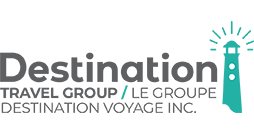Decoding the Codes
Every procedure, every appliance, and every exam has a specific code. For example, you may have had a recall exam, where your dentist checks for cavities; some scaling, where the hygienist scrapes plaque off your teeth; and some polishing.
If you’re in Ontario, your invoice will look like this:
- 01202 – Recall exam
- 11111 – 1 unit of scaling
- 11101 – 1 unit of polishing
These are dental codes which are found in your province’s dental fee guide. Dentists use these codes to record how long they spent cleaning, or which type of filling they used.
It may seem mysterious, but every line denotes a specific service, and it’s kind of neat to see your visit translated into different codes. It seemed like a regular checkup, but with codes involved, it’s now a fascinating visit!
The Fee Guide
Every dental code also has a suggested fee. Dentists can charge whatever they want for their services, but there are standards. A dental fee guide gives the most reasonable and customary rate for each and every dental code.
These fee guides get updated every year. Your insurance plan may state that it pays according to this year’s fee guide, meaning your claims will be paid based on those suggested fees. Again, your dentist can charge whatever they like, but your plan will only pay up to the fee guide amount for each code.
For example, if your dentist charges $30 for one unit of polishing and your fee guide states that one unit of polishing is eligible to a maximum of $27, you will only be eligible for $27.
Province to Province
Chances are you won’t find a copy online, but if you want to take a look at a fee guide the Ontario Dental Association can tell you how to get one. Fee guides are usually made available to insurance companies and dental offices privately.
Each province has its own fee guide. Province to province, some of the codes are the same, but Quebec has distinctly different codes than Ontario or BC.

Some plans may even state that they will pay according to a specific province’s fee guide. For example, if you live in Quebec but your dentist is in Ontario, your claim may only pay according to Quebec’s fee guide.
This doesn’t mean that you have to stop seeing your dentist in Ontario, it just means that your claim will be converted to Quebec codes, eligible at Quebec rates.
Hygienist Codes
More and more hygienists are using their own codes for claims. The Ontario Dental Hygienists’ Association actually lists their fee guide online. These codes may not be used for your claims, but rather converted to the regular provincial fee guide, depending on the terms of your plan.
Specialist Fees
Like hygienists, dental specialists have their own separate fee guide. Periodontists, endodontists, oral surgeons and others have codes listed in specialist fee guides. These codes are usually quite different from the regular provincial fee guides.
Specialist fees are almost always higher as well. Your plan will likely only pay according to the provincial fee guide, but that doesn’t mean you can’t see a specialist. It just means that their codes will be converted to the general codes and paid at the general rate.
Fee guides are really there to protect you. Many dentists only charge up to the amount suggested by that year’s fee guide, keeping their prices competitive, and saving you from paying more out of pocket.
If you ever have to switch dentists, be sure to ask your potential new dental office how they charge for services and if their charges align with the fee guide.
Dental codes can seem like gibberish to the untrained eye, but remember that they help you get reimbursed correctly. Call our office today and find out more about the plans we have to offer!





My insurer uses BC dental fee guide rather than Ontario, would it be a cost savings incentive for the company and difference paid out by patient. I am only reading that Alberta had one of the highest fees.
An insurance company uses the fee guide based on where each individual lives. This allows each company properly keep track of the claims and premiums accordingly.
Why aren’t your fee guides published for the public to see? Do most dentists charge more than insurance companies want to pay them?
Dental fees are not regulated like doctors fees are and therefore there aren’t any fee guides to publish. That being said we also are not in charge of any dental fee guide as we are a health and dental insurance brokerage that sells individual health, dental and travel insurance. If you have a concern about what you are paying you may want to contact your provincial government. Thank you for your comment.
It’s like “legalese” (legal language to make it easier for licenced members of a particular trade/profession to understand one another) but it excludes others from understanding & communicating. Exclusive language & codes keeps the average person ignorant. And yes, many dentists charge above insurance guidelines or will submit more units (15 minute slits) to cover their fees. Personally, anything not made transparent & understandable to the general public is a one-sided benefit. They should be published & regulated. Oral health is just as important as every other body part.
Amen.
I have a question.
Every 6 months, I see a dental hygienist at my dentist’s office. I occasionally get a recall exam from the dentist, but not often, and not at each visit.
Therefore, at my visit, I typically only see the hygienist who does scaling and polishing.
Since I am only seeing the hygienist, why am I being charged based on the Ontario Dental Fee Guide? Shouldn’t I be charged based on the Ontario Dental Hygiene fee guide?
The services are performed by a hygienist, not a dentist.
Thank you Rachel for your question. As we do not process claims and are not in your dental office I am unable to properly answer your question. IT seems as though your dentist is being directly billed to the insurance company so you may want to start with your dentist to see how s/he invoices the insurance company.